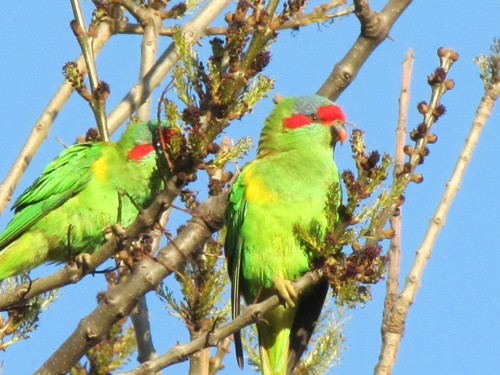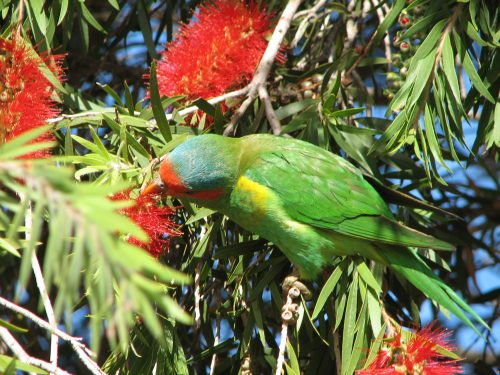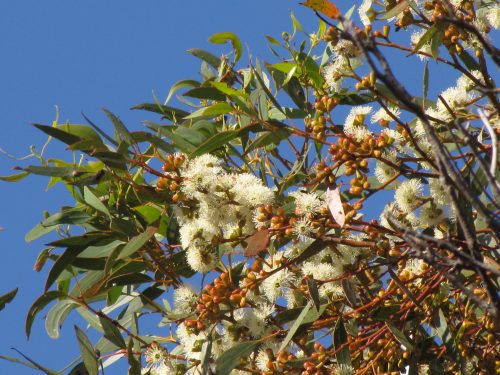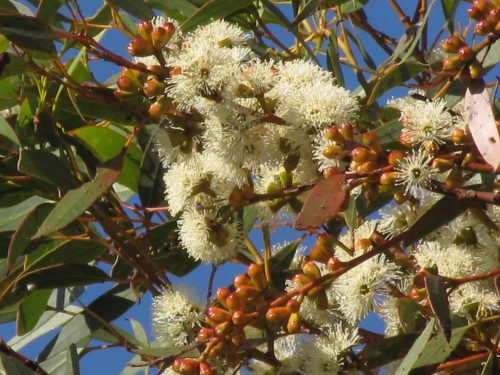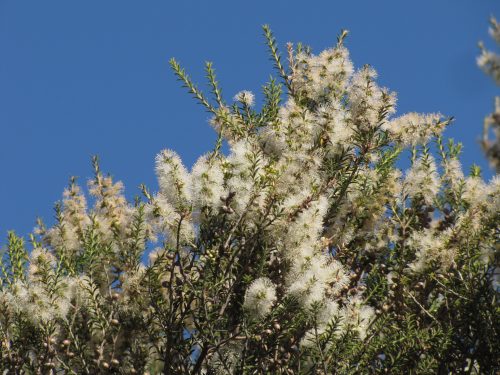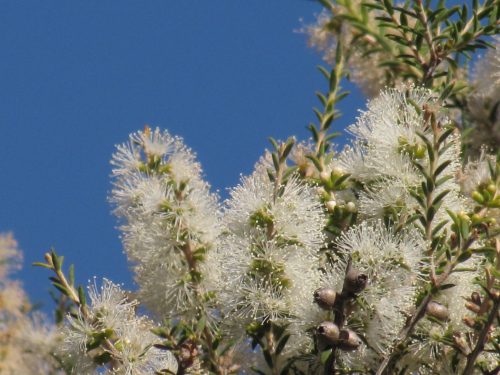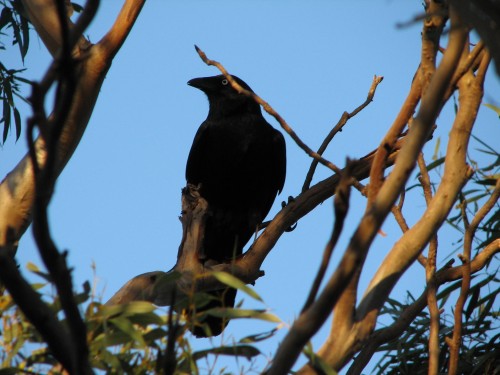Lots and lots of Lorikeets
An influx of Lorikeets
Over recent days we have had an influx of lorikeets in our garden, on our property and along the road leading to our place here on the edge of Murray Bridge in South Australia.
Normally, we have the odd flyover of a small group of Purple-crowned Lorikeets. Occasionally they will land in one of our mallee trees for a short feed, depending on the extent of flowering at the time. They rarely stay for more than a few minutes.
From time to time we also have Rainbow Lorikeets shooting across the tops of the trees at speed. They are often gone in a flash, flying like colourful arrows against a blue sky. They, too, rarely come to settle in our trees.
The current influx of Musk Lorikeets is somewhat unusual. It is the first time in over 12 years that I have recorded it here in our garden. (My database records only go back that far; I am progressively working back through them.) Although it is relatively common in this area, I haven’t recorded it in our garden in all those years. In fact, if my memory is correct, I have recorded this species in our garden on only a handful of previous occasions, all of them more than 12 years ago.
Why the influx of Musk Lorikeets?
This leads me to contemplate the question: “Why now?”
The reasons are clear and far from complex. The last six to eight months have been exceptional from a weather point of view. From late mid-winter last July (2016) we have had well above average rainfall. This extra rain has produced one of the best flowering seasons for many years over the recent summer months (December – February). The eucalyptus mallee trees have flowered prolifically, along with many other local species of shrubs and bushes. Being predominantly nectar eating birds, Musk Lorikeets have flocked to this area. I don’t mind; I love having them around.
While I was watching them feeding in a mallee tree near to our house earlier this week, something spooked them. They flew off over our orchard, wheeled around to the north, then east and like green coloured screeching darts came hurtling back to the tree near me and recommenced feeding. As they flew, I estimated that there were some 40 to 50 birds, far more than one usually sees in a flock here. Having said that, I have seen large flocks flying together while visiting my daughter in Clare in the mid-north of South Australia.
More photos
I have included below, several photos of some of the trees and bushes currently flowering in our garden. These are what the lorikeets have been feeding on.
Further reading:
- Mallee trees
- Purple-crowned Lorikeets
- Purple-crowned Lorikeets at Brown’s Road Monarto
- Rainbow Lorikeets
- Feeding time at the Zoo
- Close views of Musk Lorikeets
Crows using tools
I have written before about how clever crows and ravens can be. This is a well established fact and people around the world have witnessed how intelligent the corvid family can be. In fact, if you do a search for videos of these birds using tools you will find many hundreds of them; I have provided a link below.
Earlier this week I witnessed first hand one of the Little Ravens in our garden actually using a tool to assist in finding food. It had picked up what looked like a flat rock and was progressively using it to prise bark off the trunk of a mallee tree near the house. Once the bark was lifted it dropped the stone and used its beak to grab whatever was hiding beneath the bark.
Spiders, beetles and a whole range of small creatures routinely live under the bark of the local trees. Several times the bird flew down to the ground to retrieve the stone in order to use it again for the same purpose. After about three or four little snacks it flew off, stone in its beak to another tree, this time out of sight.
Of course, I didn’t have my camera handy at the time. [Sigh]
Further reading:
- Clever crows – articles from my archives
- Corvids – links to more articles about crows and ravens
- Videos of crows using tools
- Little Ravens feeding their young
- A very clever crow
Galahs nesting
Over the last few weeks several Galahs have been hanging around a hollow in one of our mallee trees near our house. This is the largest tree on our property and is probably well over a hundred years old-maybe several hundred. Only mature age mallee trees have trunks the size of this one. And only mature mallee trees develop branches large enough to create hollows.
Over recent years this hollow hosted a wild bee colony, but that seems to have moved on. Over the last two to three years Galahs have investigated this hollow on many occasions but none has nested in it. One pair even diligently went about enlarging the hollow but with no nesting taking place.
I can’t be sure whether this is the same pair or a new pair trying it on for size. They certainly seem very interested and hang around there off and on for several hours every day. They even chase off other interested tenants, so they must be quite serious about it.
I’ll keep you posted on any developments on the home front.
Mallee Trees
In recent posts I have mentioned the word “mallee”. This is a particularly Australian word derived from the Aboriginal people of Australia. It specifically relates to a group of eucalypt tree species collectively known as “mallee trees.”
“The Mallee”
Some areas of Australia are referred colloquially as “The Mallee“. These are areas where the mallee tree is the dominant species. The area where we live in Murray Bridge South Australia and areas to the east of here to the Victorian border are often referred to as the “Murray Mallee” because here the Murray River flows through the region where mallee trees are common. We have many mallee trees in our garden and the Murray River is but 5km from here.
Mallee birds
There are many bird and animal species whose preferred habitat is the mallee and its associations. Some species even have the word “mallee” as a part of their name eg Mallee Ringneck Parrot, Mallee Emu Wren and the Malleefowl.
For more information about the word mallee check out the Wikipedia entry here.
UPDATE October 2006: since writing this article I have added the photos that now appear on this page. Both were taken on our property and show typical mallee trees.
UPDATE March 2010: Further photos have been added below.
.
The following photos were taken elsewhere and show typical examples of mallee trees.
